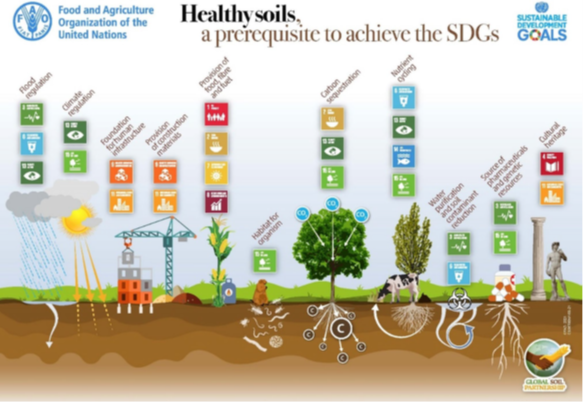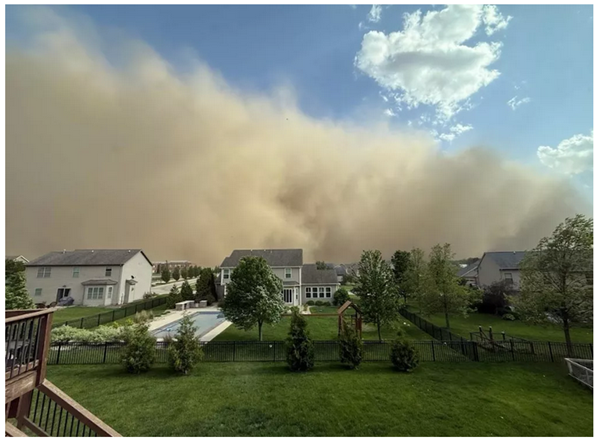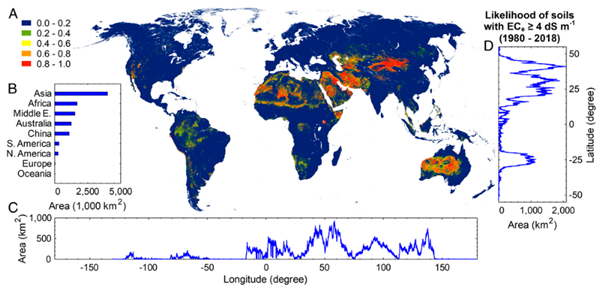Listen here on Spotify | Listen here on Apple Podcast
Episode released on October 16, 2025
Episode recorded on July 9, 2025
Image

Nima Shokri discusses the importance of global soil health and its impacts on water resources, food security, and sustainable development.
Nima Shokri is the Chair and Professor of GeoHydroInformatics at Hamburg University of Technology, and also the Executive Co-director of the United Nations University Hub that focuses on Engineering and climate adaptation strategies.
Highlights | Transcript
Soil Health
- Definition of soil health: Soil health is defined as the continued capacity of soil to function as a vital living ecosystem that sustains plants, animals, and humans. Healthy soil gives us clean air and water, bountiful crops and forests, diverse wildlife, and beautiful landscapes (USDA NRCS link).
- There is no UN Sustainable Development Goal (SDG) that focuses specifically on soil health; however, soil health contributes to many SDGs, including SDG 2 (Zero Hunger), SDG 15 (Life on Land), SDG 8 (Economic Growth), SDG 1 (No Poverty), SDG 6 (Clean Water and Sanitation), SDG 10 (Reduced Inequality) (Shokri et al., 2025), Fig. 1).
- Recent dust storms in the US Midwest, Illinois and Chicago in May 2025, related to large storms, strong winds, loose topsoil, and dry farm fields (NOAA link) (Fig. 2).
- 1930s dust storm in the US: President Roosevelt’s letter to State Governors (Feb. 26, 1937): "the nation that destroys its soil, destroys itself." Soil Conservation Service created in the mid-1930s to address soil health.
- The US Soil Conservation Service emphasizes cover crops in winter, no-till/strip-till agriculture, crop rotation and many other practices to promote soil health locally (NRCS, USDA link).
- Soil health is a global issue that requires international cooperation. As you indicated “Unlike people, dust particles require no visa to cross international borders (. They can travel effortlessly thousands of kilometers from one country to another." And then, emphasizing that's a transboundary issue in need of serious global cooperation.
- For example, if a saline lake is shrinking, high salinity soils are exposed and can be transported thousands of kilometers.
- NOAA’s GOES 19 satellites tracked a giant dust plume moving 1000s of miles from the Saharan Desert from Africa to US (May 28 – June 2) (NOAA link).
- Nima Shokri and team developed global salinity map derived from deep understanding of soil salinization processes at the lab scale and upscaling to the global scale.
Soil Salinization
- Lab scale experiments assessing the impact of particle size, shape, and structure, solution composition, and atmospheric conditions impact evaporation and soil salinization using synchrotron Xray tomography and lab experiments. [NS1] (link 1, link 2, link 3, link 4, link 5, link 6, link 7, link 8, link 9, link 10)
- Learn physics and processes at the pore scale and use it to understand global response.
- Lab experiments show impact of soil texture (sand, clay), water table depth (1 m and deeper), climate etc impact soil salinization. [NS2] (link 1, link 2)
- Anthropogenic activities, e.g., irrigation affect soil salinization.
- Global map of soil salinization, 43 parameters considered, used AI to build a model linking soil salinity to these parameters (Hassani et al., PNAS, 2020).
- Global map based on ~ 200,000 soil salinity data points
- 43 different environmental parameters, including measurements remote sensing etc.
- Target parameter: soil salinity, 43 columns of other parameters over 200,000 points to estimate soil salinity
- Apply AI algorithm to find relationship relating target parameter (soil salinity) to the 43 environmental parameters.
- Testing data set and separate data for model validation
- 12 million km2 of global land (2.5% of land area outside frigid zones, 470 million km2) is salt affected 75% of time (1980 – 2018) (Fig. 3)
- Asia, China, Kazakhstan, Iran, Africa, and Australia
- Improved existing maps of soil salinity: doubled global salinity relative to Food and Agriculture Organization and IHGW
- Reduced 43 parameters to 14 parameters to predict future soil salinity (5 parameters climate related)
- Selected threshold salinity (4dS/m) to predict whether soil is saline or not
- Recent maps include uncertainty quantification at pixel level.
- Data density is highest in EU and US but can be used to extrapolate to other regions globally
- There are a lot of co-benefits to maintaining healthy soil:
- Soil carbon and organic matter, amount of CO2 in soils is substantially larger than CO2 in the atmosphere
- Soil degradation releases CO2 to the atmosphere
- Soil plays an important role on carbon sequestration
- AI4SoiHealth funded by the European Commission ($13 million)
- Digitalize the European soils
- 30 m resolution soil map for Europe
- Indices to allow soil health to be compared across different regions
- Produce educational materials and videos
- United Nations Sustainability Nexus: Analytics, Informatics, and Data AID
- Soil Health Forum: repository for data and tools (Shokri et al., Sustainability Nexus Forum, 2025).
- Centralized data to support modelers, practitioners, farmers, policy makers
Image

Image

Image




